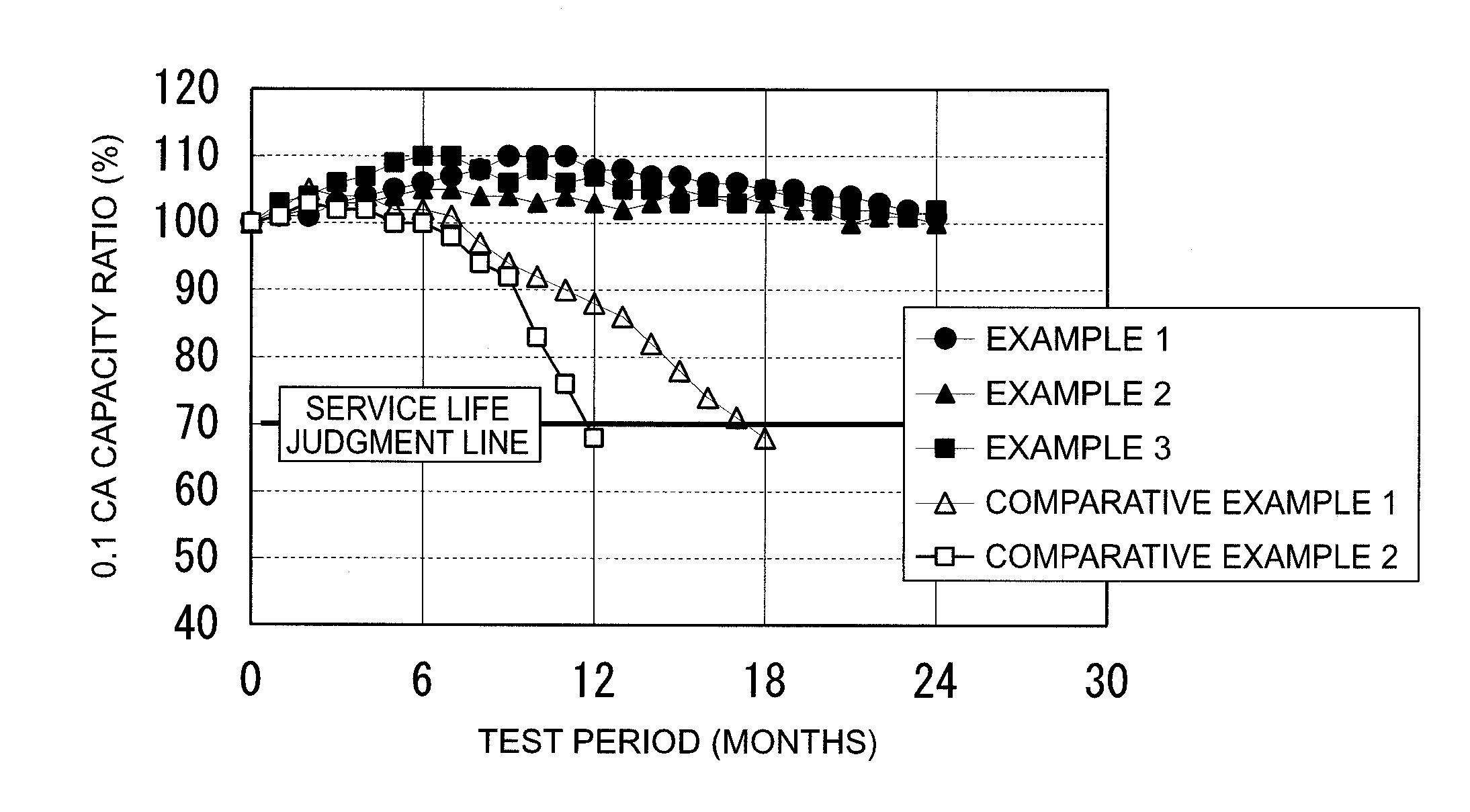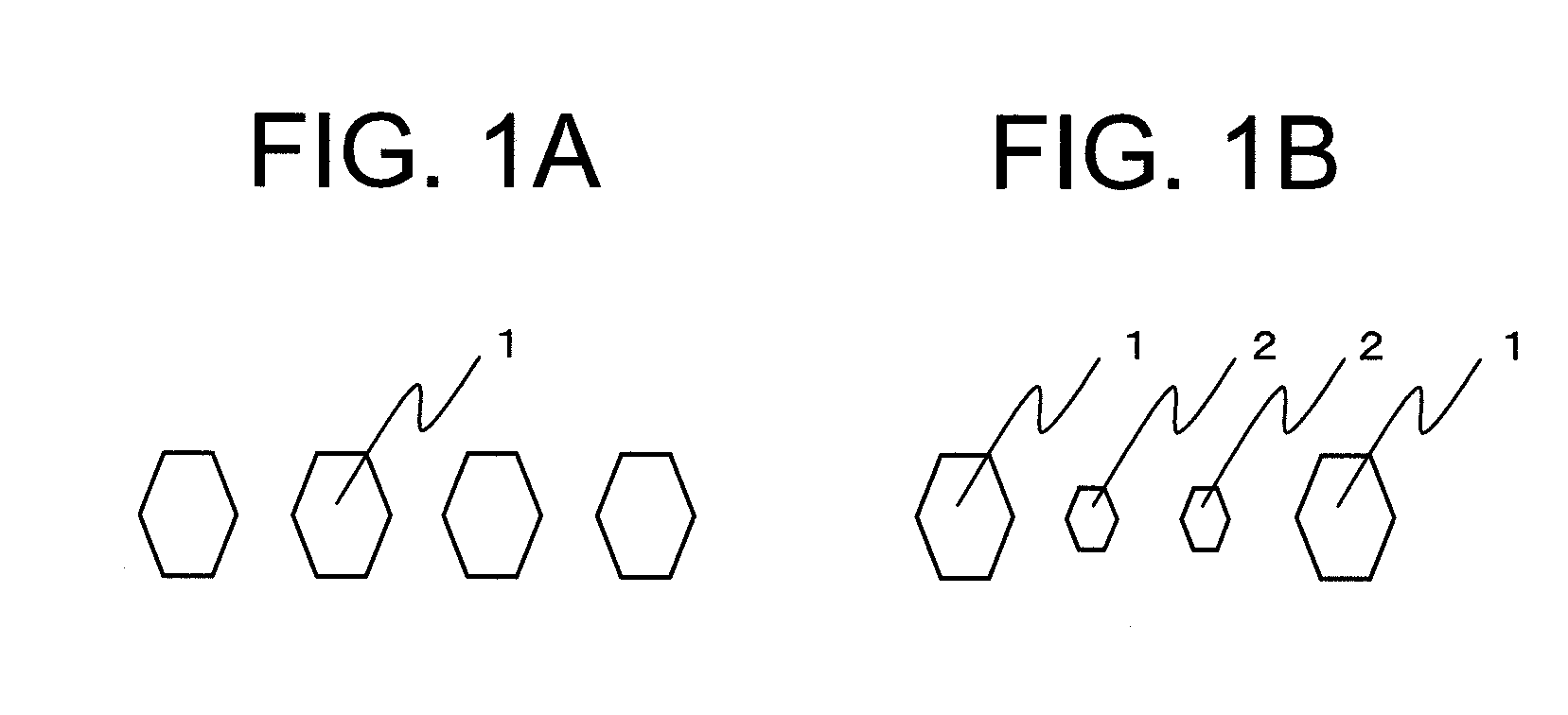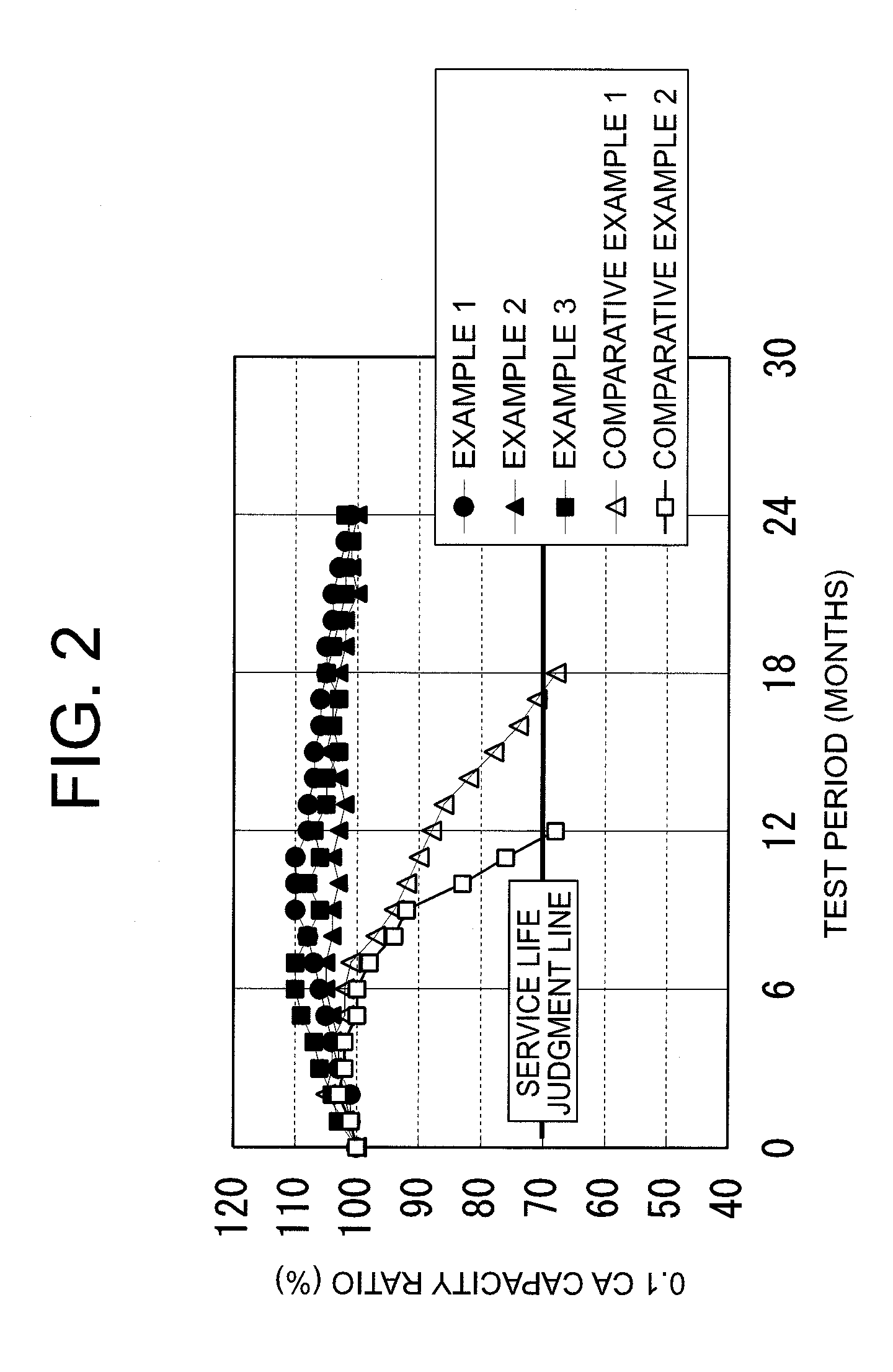Grid plate for lead acid storage battery, plate, and lead acid storage battery provided with same plate
- Summary
- Abstract
- Description
- Claims
- Application Information
AI Technical Summary
Benefits of technology
Problems solved by technology
Method used
Image
Examples
example 1
[0101]An operational test was carried out to ascertain the effect of the SOC. In this test, the SOC was 60%, the charge current was 0.2 CA, the discharge current was 0.2 CA, and charging for one second and discharging for one second was repeated without a rest interval. The test was carried out at a temperature of 25° C., the battery voltage was kept in a range of 1.80 V to 2.42 V per cell, and the degree of degradation was compared with other tests. In the present example, the SOC was kept at 60% throughout the interval of the operational test.
example 2
[0102]An operational test was carried out to ascertain the effect of the SOC with the SOC at 30%, the charge current at 0.2 CA, and the discharge current at 0.2 CA. Charging for one second and discharging for one second was repeated without a rest interval. The test was carried out at a temperature of 25° C., the battery voltage was kept in a range of 1.80 V to 2.42 V per cell, and the degree of degradation was compared with other tests. In the present example, the SOC was kept at 30% throughout the interval of the operational test. The only difference between the present example and example 1 was the SOC.
example 3
[0103]An operational test was carried out to ascertain the effect of the SOC with the SOC at 90%, the charge current at 0.2 CA, and the discharge current at 0.2 CA. Charging for one second and discharging for one second was repeated without a rest interval. The test was carried out at a temperature of 25° C., the battery voltage was kept in a range of 1.80 V to 2.42 V per cell, and the degree of degradation was compared with other tests. In the present example, the SOC was kept at 90% throughout the interval of the operational test. The only difference between the present example and example 1 was the SOC.
PUM
 Login to View More
Login to View More Abstract
Description
Claims
Application Information
 Login to View More
Login to View More - R&D
- Intellectual Property
- Life Sciences
- Materials
- Tech Scout
- Unparalleled Data Quality
- Higher Quality Content
- 60% Fewer Hallucinations
Browse by: Latest US Patents, China's latest patents, Technical Efficacy Thesaurus, Application Domain, Technology Topic, Popular Technical Reports.
© 2025 PatSnap. All rights reserved.Legal|Privacy policy|Modern Slavery Act Transparency Statement|Sitemap|About US| Contact US: help@patsnap.com



